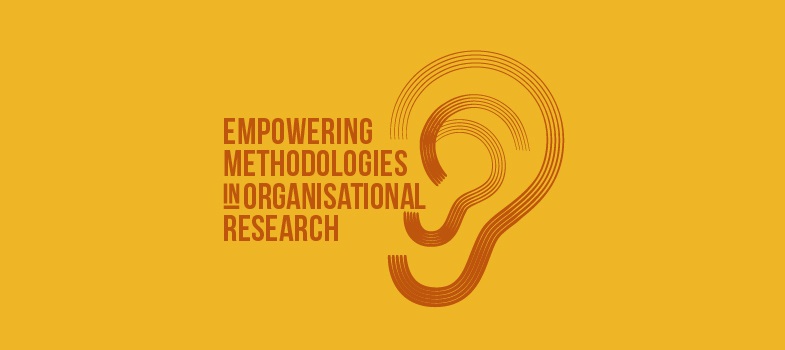6 Embodiment
Introduction
In this section we will consider the relationship between embodiment and empowerment in research. Think about how you see your own body when you are doing research. Do you see it as an intrusion or a potential source of disruption?
Empowering methodologies begin with an acknowledgment of the importance of bodies – both human and non-human – as a necessary precondition of embedded knowledge and understanding. Here we will consider the role of the body in the research process and the importance of embodiment in empowering organisational research.
We use our bodies all the time when doing research. Yet there is relatively little acknowledgement of the importance of researchers’ bodies in accounts of the research process, even when the researcher is working closely with organisations and individuals over a long time period. Nor is there much consideration of the researcher’s body in related practices, including reading, thinking, writing and talking.
The reasons for this relate to a way of thinking developed from within a Eurocentric philosophical tradition that has become globally dominant (Connell, 2007). The artificial separation of mind from body is associated with René Descartes, whose philosophical ideas established the foundations for a mind/body dualism that ‘constructs the body as fundamentally different from and subservient to the soul, mind and consciousness’ at a time when modern Western thought was beginning to take shape (Thanem and Knights, 2019: 21). This dualism informs how we think about and treat bodies in social and organisational research – including researchers’ bodies (see Film Focus 11).
Conventional methodological advice tends to position the researcher’s body as peripheral or problematic in the production of knowledge. Consequently, researchers are advised to try to minimise the effects of their physical presence in any social setting they are researching. The reasons for this relate to the perceived importance of the
However, it is impossible to remove the body from research settings; qualitative researchers in particular have sought to acknowledge its presence and potential. Interviewer(s) and interviewee(s) understood each other not just verbally but also by reading each other’s body language, or observing how each other respond to questions and answers. The interpretive method of
While methods like participant observation involve watching the bodies of others as they act, perform and interact, there is a danger here of objectification. The term ‘scopophilia’ refers to the pleasure of looking: ‘taking other people as objects and subjecting them to a controlling and curious gaze’ (Mulvey, 2009: 17). While this term originates in Mulvey’s analysis of cinematic representations of women as passive objects of a ‘male gaze’, related concepts exist in postcolonial theory, where the gaze is used to understand how colonial and imperialist powers seek to dominate and discipline colonial subjects. As introduced in Section 3, the ‘white gaze’ positions the colonised subject as the ‘Other’ who is called upon to mimic Western cultural values, norms and institutions – even though this always involves failure, because they are ‘almost the same but not quite’ (Bhabha, 1994: 84, emphasis in original). Extending the concept of the gaze into organisational research enables us to appreciate how bodies are conventionally treated and to propose more empowering alternatives. Specifically, it encourages us to think about bodies relationally, through our own encounters, and to turn the gaze on ourselves.
There is a further difficulty in conventional understandings of embodiment enabled by methods like participant observation. This arises because they position the body as an instrument that can be used to collect data using sight; meaning that the other senses that the body uses to encounter and learn about the world (including touch, smell, hearing and taste) tend to be overlooked or treated as secondary. This
Embodied research involves more than simply using the body as a research tool. Instead it implies a challenge to how we understand knowledge and knowing (see Section 5). The importance of embodiment in empowering research arises from alternative ways of knowing that are opened up by taking the body seriously as a source of understanding and a medium for communicating knowledge. Empowering research explicitly draws attention to the presence of bodies in research settings and focuses on actions, performances and encounters between them. The body, including the researchers’ own body, is thereby understood as a site of research: the focus of a deliberate attentiveness through which understandings of power relations, and the bodily discipline that they produce, may be gained.
Yet it can be difficult to represent what is experienced through the body. Most research leads to writing academic articles or books. It can be hard to convey sensory knowledge enabled by the body to an audience using language alone, particularly if this is written for publication in a journal that has strict, formulaic norms about how research articles should be written (Alvesson and Gabriel, 2013). Yet there are resources that organisational researchers can draw on in order to find creative inspiration for doing embodied research. In other areas of research (including geography, performance, cultural and communication studies), awareness and use of the body as a storytelling medium is fundamental to the kind of knowledge that is produced.
Madison (2018) provides insight into the distinctiveness of embodied knowledge enabled by performances of oral history and life stories, where life history interviewing provides the basis for translating personal stories into live or digitally recorded performances that are enacted by interlocutors/researchers and are witnessed by audiences. What makes this kind of knowledge distinctive and embodied is the importance of
Another example of how embodiment can be better recognised within the research process involves the use of
- researchers walking with participants in spaces and places where they are familiar
- talking to participants and using smell, sight, sound and touch to recall and situate their knowledge of the context
- asking participants to video record landscapes as they walk.


